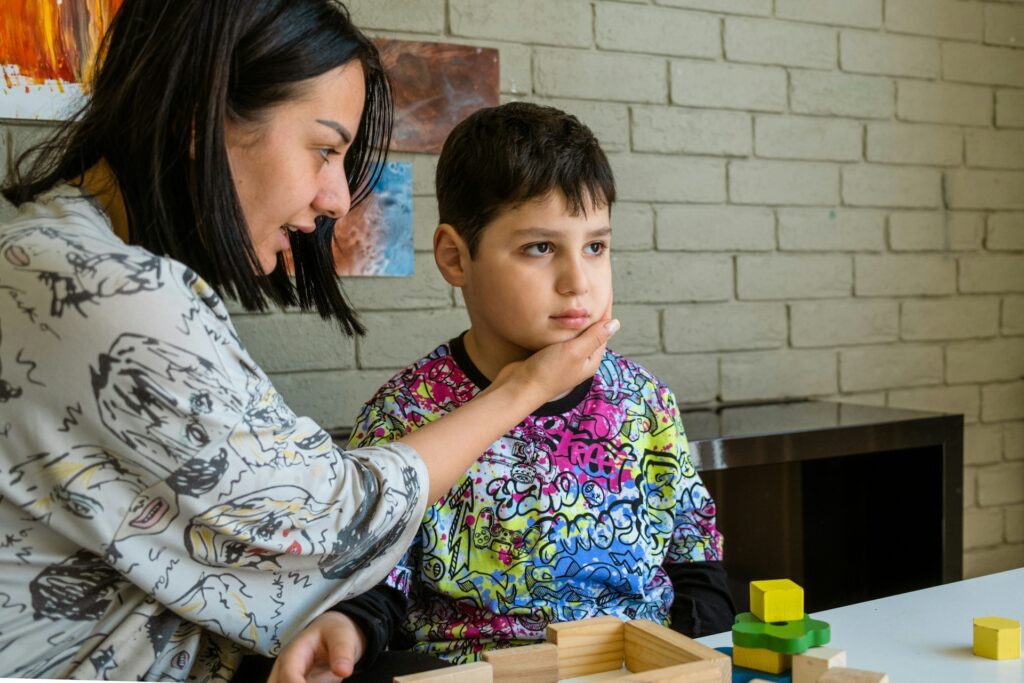Understanding meltdowns in children with autism can be quite challenging for parents and caregivers. These intense episodes of emotional overwhelm can leave everyone feeling exhausted and stressed. Unlike the occasional temper tantrums seen in many kids, meltdowns in children with autism are not manipulative or purposefully disruptive. They are a child’s response to overwhelming situations or stimuli, moments that are simply too much for them to handle.
Behavioral therapists for autism are trained to help manage and reduce these meltdowns. These professionals use specialized strategies tailored to each child’s needs, providing valuable support for children and their families. By working with a behavioral therapist, families can learn to identify triggers and encourage calming strategies that create a more peaceful home environment. These techniques not only help children cope better but also support parents as they navigate daily life within the autism spectrum.
Understanding Meltdowns in Children with Autism
Meltdowns often occur when a child with autism is faced with an environment or situation that overwhelms them. It’s crucial to understand what sets them apart from regular temper tantrums. While tantrums may be used by children to get what they want, meltdowns are involuntary reactions to distress. For instance, a child may have a meltdown due to sensory overload, such as loud noises or bright lights, which can feel suffocating and terrifying.
Common triggers for meltdowns include:
– Sensory Overload: Bright lights, loud sounds, or strong smells.
– Changes in Routine: Sudden changes can be unsettling, leading to distress.
– Unexpected Events: Surprises or disruptions can trigger anxiety.
– Communication Challenges: Difficulty expressing needs or feelings.
Recognizing these triggers is the first step in managing and reducing meltdowns. Parents can work on creating strategies to avoid known triggers, offering a sense of stability and understanding for their child. It’s also important to stay calm during these episodes, as models of controlled behavior can be comforting and grounding for kids.
By gaining an understanding of what causes meltdowns, parents and caregivers can work toward preventing them or minimizing their frequency. Remember, it’s about providing a supportive environment where children feel safe and understood. Working with behavioral therapists who specialize in autism can guide this process significantly, offering techniques and insights that foster a more harmonious daily experience.
Behavioral Therapy Techniques for Managing Meltdowns
Behavioral therapy provides specific techniques that can help manage and reduce meltdowns in children with autism. One widely used method is Applied Behavior Analysis (ABA). This approach focuses on understanding what leads to meltdowns and using targeted activities to reduce them. ABA helps children improve their behaviors using positive reinforcement to encourage desirable actions and discourage problematic ones.
Sensory integration strategies also play a crucial role. These techniques help children manage sensory inputs better, so they aren’t as likely to feel overwhelmed. Activities might include introducing calming sensory tools like fidget toys, weighted blankets, or noise-canceling headphones, which can assist a child in navigating through situations that might otherwise induce a meltdown.
Positive reinforcement methods involve rewarding a child whenever they express themselves positively or remain calm during a potentially triggering situation. This might look like verbal praise, a small reward, or extra playtime. By reinforcing these positive behaviors, children can learn alternative ways to handle stress and anxiety, shifting away from meltdowns as a means of dealing with their experiences.
Creating a Safe and Calm Environment
Designing a supportive environment is key to helping children with autism avoid meltdowns. Start by identifying and minimizing potential triggers at home or in familiar spaces. This could involve dimming bright lights, reducing noise levels, or establishing a predictable daily routine, giving the child a sense of security and stability.
– Establish Consistency: Implement daily schedules that stick to a familiar pattern.
– Clear Communication: Use visual aids and simple language to explain any changes or plans.
– Quiet Zones: Create a designated space where the child can retreat to if they begin to feel overwhelmed.
Building these safe spaces at home allows children to decompress when the world feels too much. Consistent routines help avoid unexpected changes, offering a grounding familiarity. By integrating clear communication strategies, children are better prepared for transitions, reducing their anxiety and the likelihood of a meltdown.
Working with Behavioral Therapists for Autism
Collaborating with behavioral therapists offers a structured support system for managing meltdowns. These professionals bring expertise and understanding, working closely with families to develop personalized strategies. They observe the unique challenges each child faces and tailor their approach to meet individual needs.
Involving a behavioral therapist means benefiting from a therapy plan that provides guidance specific to the child’s experiences. They help interpret behavioral cues, making it easier for parents to understand their child’s responses. This partnership not only assists in managing current challenges but also equips families with tools to address future situations.
Behavioral therapists play a significant role in equipping families with knowledge and strategies to create a harmonious environment. Their support helps make daily life more manageable, reducing stress while promoting positive growth for children and allowing them to handle difficult situations with greater ease.
Meltdowns can be difficult, but with the right tools and help, parents can support their children effectively. Understanding, patience, and the guidance of trained professionals can transform these challenges into opportunities for development and understanding.
For families seeking guidance in handling meltdowns effectively, consider engaging with behavioral therapists for autism, who offer expert support tailored to your child’s needs. At Behavioral & Educational Solutions P.C., our professionals in Silver Spring, MD, provide comprehensive therapy solutions that can make a positive difference in your child’s life. Discover more about our behavioral therapists for autism to start creating a more harmonious environment today.





